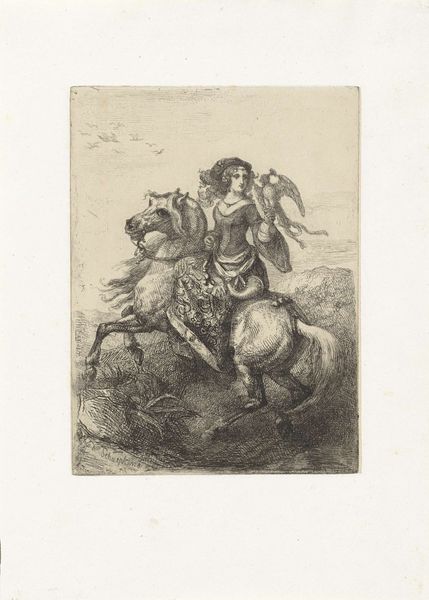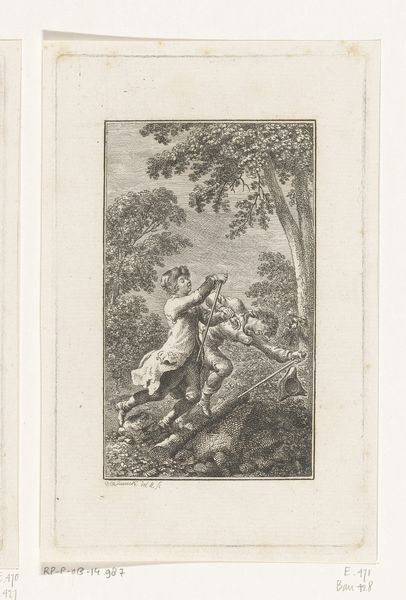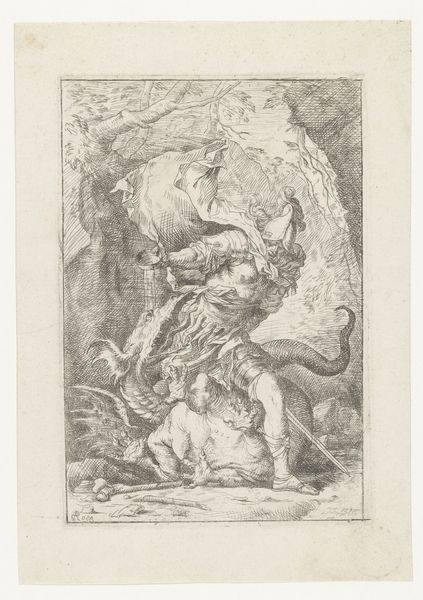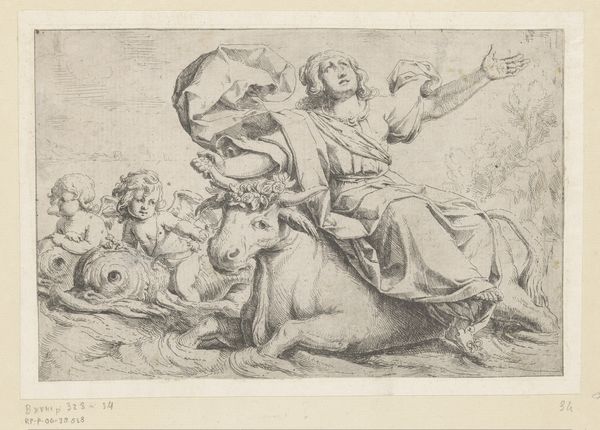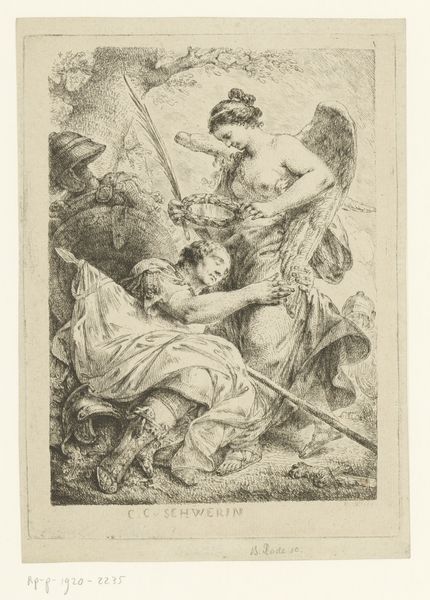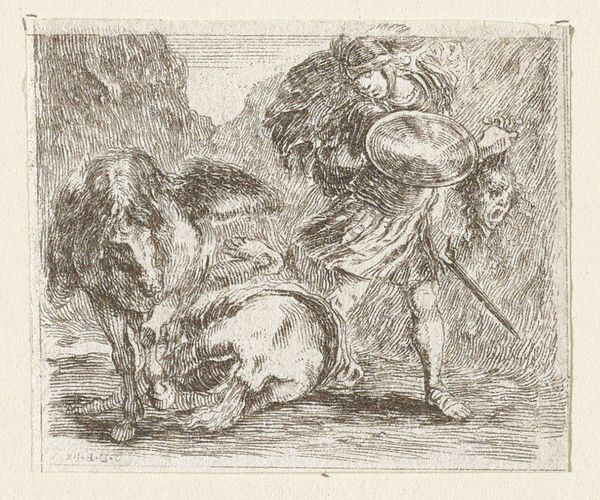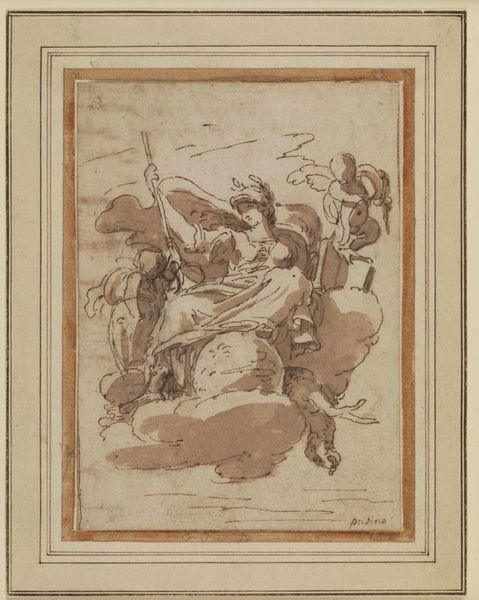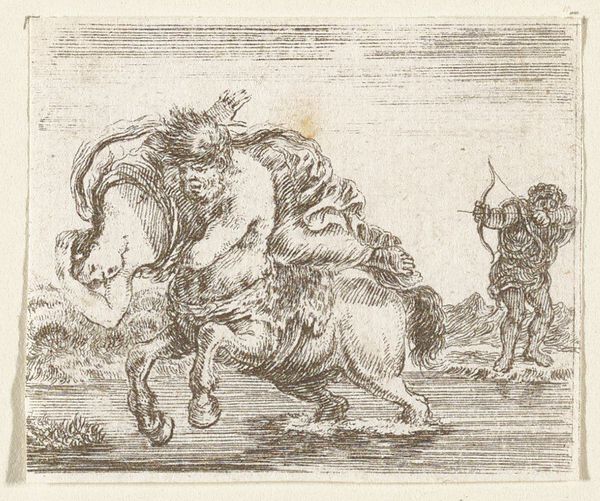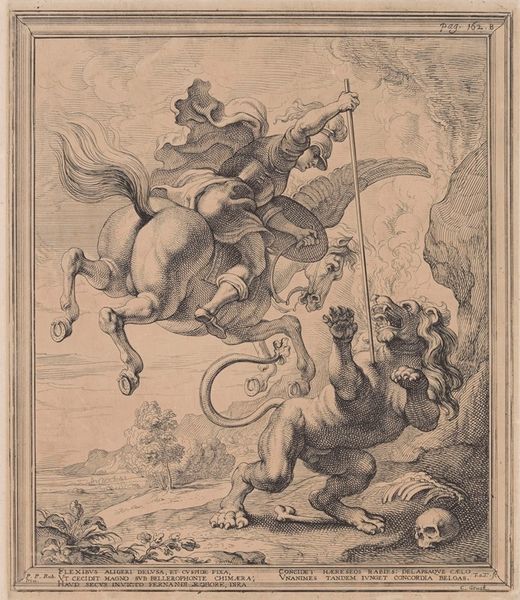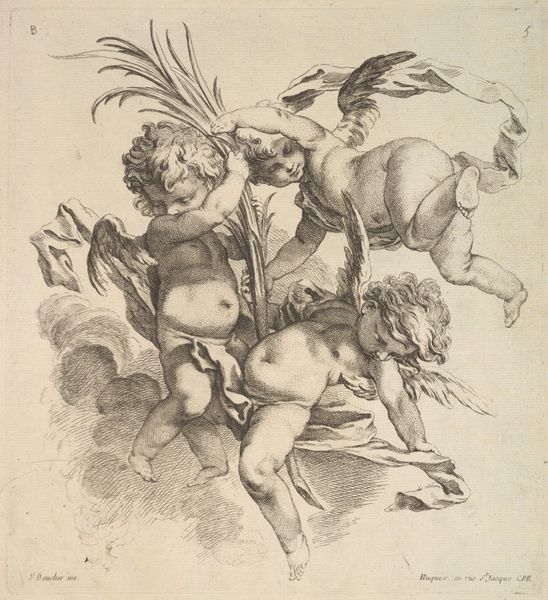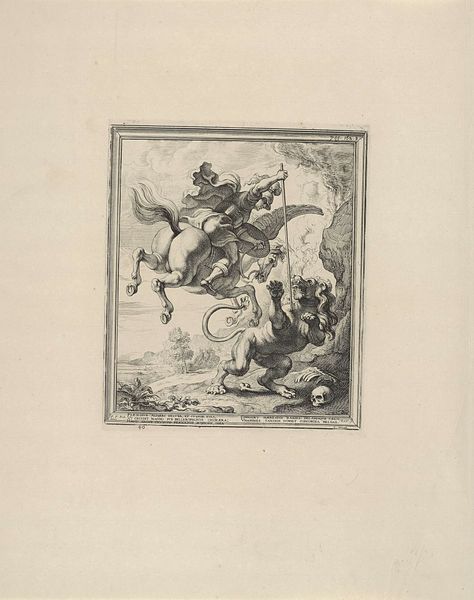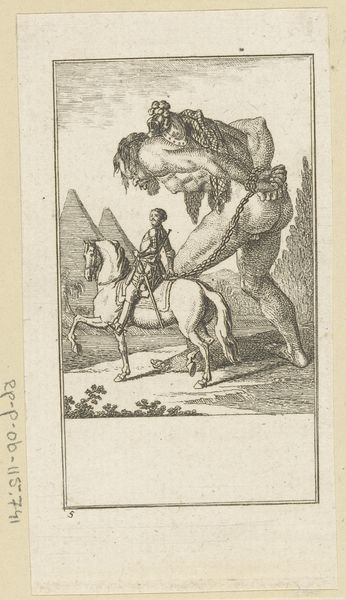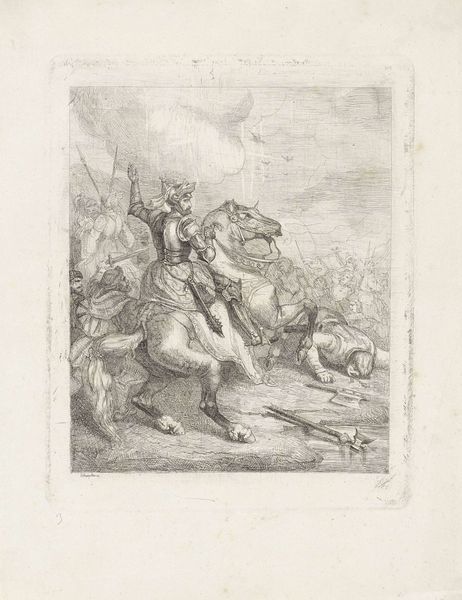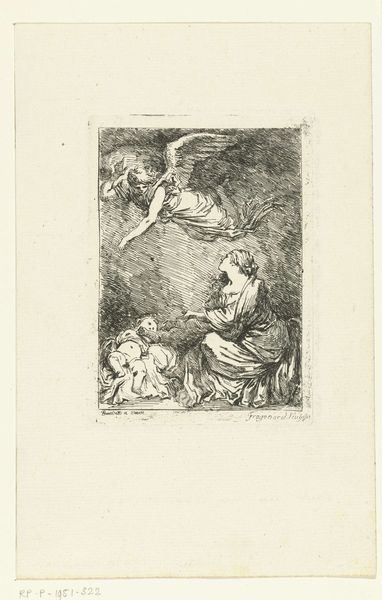
Dimensions: height 194 mm, width 144 mm
Copyright: Rijks Museum: Open Domain
Editor: This etching by Theodoor Schaepkens, dating from the mid-19th century, is titled "Dame te paard met valk op de hand"—"Lady on horseback with falcon on hand". It strikes me as a blend of power and vulnerability. What do you see in it, viewed through a historical lens? Curator: It’s fascinating how this print engages with aristocratic visual traditions even as social structures were evolving. The image of a noblewoman with a falcon was historically linked to status and the leisure activities of the elite. This piece speaks to a particular moment of cultural memory and perhaps even a yearning for an idealized past, but does it successfully perpetuate that imagery or subvert it? Editor: I see that! But how can you tell if it subverts those ideas? Curator: Consider how readily available similar imagery would be to the common citizen at this time. This wasn't a private, inaccessible painting, but a print, repeatable and shareable. Do you think this fact democratizes access to imagery previously reserved for nobility, potentially eroding its power? Editor: That’s a great point. The accessibility changes the message, even if the image seems traditional at first glance. Plus, making this in pencil emphasizes the creative hand of the artist. Curator: Precisely! Also, remember museums began growing in popularity and number, exposing many people to a shared, constructed history. These institutions elevated artworks by deciding what and how should be studied and revered. Would this image even be well-regarded outside of its selection by a curator? Editor: Wow, I hadn't thought about the role of institutions influencing our view. Thanks, I’ve got a much richer understanding now. Curator: Indeed. It all makes you think about how we construct meaning around images.
Comments
No comments
Be the first to comment and join the conversation on the ultimate creative platform.
